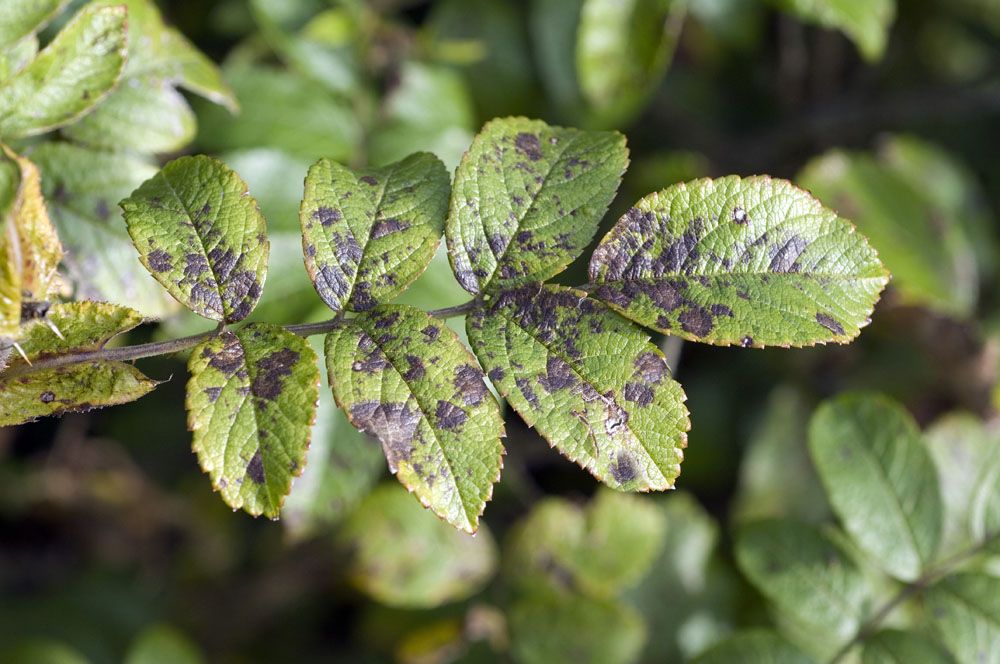
Rose Black Spot
Rose Black Spot
Meta Description: Want to know about the rose black spot? Read this article to find out what is rose black spot, what are its symptoms, and how to control rose black spot.
Can you imagine that you have planted rose plants very keenly, taking full care of them and waiting to cut the beautiful flowers but seeing the attack of rose black spot? Of course, it would be a nightmare for any gardener or rose grower. If rose plants have an open enemy that weakens them very quickly and spreads very quickly, then it would be black spot diseases. It is one of the most common diseases of rose and found throughout the world. This disease is caused by fungus in which leaves develop black spots followed by yellow patches around them. If it is left uncontrolled, it can cause an epidemic and spread to other plants very quickly.
Cause of Rose Black Spot:
The causative agent of black spot is a fungus, Diplocarpon rosae. Wherever the roses are planted, this disease chases them down. Like most other fungal diseases, this disease also loves wet moist conditions, humid environment, and cool weather to attack. Conversely speaking, summer conditions and dry environment will limit its growth. It usually occurs early in the growing season and weakens your plant severely. It does not kill the rose plant directly but makes it too vulnerable to other diseases and harsh conditions that it won’t stand them too long.
Like other fungal diseases, black spot also needs wind and water to spread to other plants. A temperature around about 65 F is ideal for their spore germination, and disease spreads more rapidly at 75 F.
Symptoms of Black Spot:
As the name shows, irregular-shaped black spots half an inch develop on the upper side of the leaves. It never develops underside of the leaves. The spots appear on the lower leaves and move to the upper leaves. As the disease advances, the area surrounding the black spots becomes yellow, and the whole leaf shows irregular black and yellow patches. Eventually, the leaves fall prematurely.
Black spots also affect canes as well. Dark purple blisters develop on the canes that become black afterward. Sometimes flowers may also develop some red spots. The infected plant becomes defoliated, weakened, and vulnerable to many other diseases.
How to Prevent Black Spot Disease:
Follow the following points to prevent your rose plants from getting the disease:
Avoid overwatering the plant as it creates ideal conditions for fungus development and spread.
Water in the morning, so that as the day progresses, the water evaporates and doesn’t stand.
Plant those varieties of roses that are resistant to black spot.
Don’t water the foliage and keep it dry as spores need wet conditions to germinate.
Plant your plants at a recommended distance to allow proper air circulation and do timely pruning.
Pay a regular visit to your garden and if you notice an early infection, remove the infected leaves as early as possible to stop the spread of the spores.
How to Control Black Spot Disease:
Once you have removed the infected parts, apply fungicides to the plants to restrict the disease. There are many organic fungicides available in the market based on copper, sulfur, potassium, and neem oil. These fungicides are best to use and also environment friendly. Spray fungicide to the whole plant, including both the upper and lower sides of the leaves.
You can also prepare your own antifungal spray at home. All you have to do is mix one tablespoon of baking soda in 1 gallon of water and add a little bit of soap to it. After mixing, spray it on the whole plant, and it will prevent the black spot disease from further spreading.
